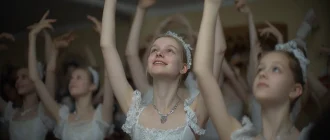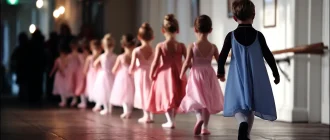The School of American Ballet, co-founded by Lincoln Kirstein, is a top ballet school in the United States, established in 1934. Known for its rigorous training and distinguished alums, SAB has significantly influenced American ballet. This article covers its history, curriculum, notable alums, and everyday life at SAB.
Graceful Insights
- The School of American Ballet, founded in 1934 by George Balanchine and Lincoln Kirstein, aims to cultivate a distinctly American ballet tradition and has produced numerous successful alums in the global ballet scene.
- Located at Lincoln Center, SAB’s comprehensive curriculum integrates classical ballet with contemporary, jazz, musical theater, and hip hop, ensuring students develop a versatile skill set for their dance careers.
- The school offers various training programs tailored to different age groups, performance opportunities, and financial aid options, making ballet education accessible to talented students regardless of their economic background.
Art de Podcast
School of American Ballet (SAB) Overview Table

The School of American Ballet, founded on January 2, 1934, in New York City by Lincoln Kirstein and George Balanchine, was established to foster a unique American ballet tradition.
The school’s inception marked a significant turning point in the development of ballet in the United States, aiming to cultivate American ballet talent and influence the evolution of ballet on a global scale. Located at Lincoln Center, the school has been instrumental in its country of development and influence.
Founders’ Vision
George Balanchine and Lincoln Kirstein envisioned a school to teach ballet techniques and foster a distinctly American style. Balanchine envisioned training dancers for a major classical ballet company in America, ensuring they had the skills and artistry needed to perform his groundbreaking choreography. This vision laid the foundation for the New York City Ballet, with SAB as its official school.
The founders’ dedication to excellence and innovation in ballet education has been a guiding principle since the school’s inception. Their commitment to training dancers with outstanding promise continues to shape the curriculum and pedagogy at SAB, ensuring that each generation of students is prepared to carry forward the legacy of American ballet.
Historical Milestones
Throughout history, the School of American Ballet has achieved numerous milestones that have solidified its place as a leading institution in dance education. In 1935, just a year after its founding, SAB created its first performing group, a significant step in realizing Balanchine and Kirstein’s vision. This early success set the stage for SAB to become a pivotal force in shaping American classical ballet and training generations of dancers.
In 2009, the School of American Ballet was awarded the National Medal of Arts, a testament to its enduring impact on the arts in the United States. This recognition highlights the school’s role in preserving and advancing the art of ballet, ensuring it remains a vibrant and dynamic part of American culture.
Notable Alumni
The School of American Ballet has produced many notable dancer alums who have succeeded in the ballet world. Graduates frequently join prestigious ballet companies worldwide, including the Royal Ballet and the Paris Opera Ballet, significantly impacting the global ballet scene. This tradition of excellence underscores SAB’s reputation as a premier training ground for elite ballet dancers.
Among its distinguished alums are influential figures such as William Forsythe, who has become a renowned artistic director and choreographer. These former students exemplify the high standards and rigorous training that SAB is known for, and their achievements inspire current and future students.
The success of SAB’s alums is not limited to performance alone. Many have also made significant contributions as faculty members and artistic directors, furthering the school’s global mission to cultivate and promote ballet talent. This legacy of excellence and leadership continues to drive SAB’s commitment to nurturing the next generation of ballet stars.
Comprehensive Dance Curriculum

The curriculum at the Jaffrey Ballet School, part of American Ballet, is designed to provide students with a diverse and rigorous dance education, integrating classical ballet with contemporary and jazz dance.
The curriculum includes training in the Vaganova method, ensuring a strong foundation in classical ballet. This comprehensive approach to teaching ensures that students develop versatility and a broad skill set, preparing them for a successful dance career at the Joffrey Ballet School.
Classical Ballet Technique
At the heart of SAB’s curriculum is classical ballet training, which emphasizes the Vaganova method. This technique, known for its precision, strength, and fluid movement, forms the foundation of the student’s dance education. George Balanchine’s vision for a dedicated training school to prepare dancers for his choreographic demands is realized through this rigorous approach to ballet technique.
The Vaganova method is complemented by elements from Russian, English, and Danish traditions, ensuring that students receive a well-rounded classical ballet education. This blend of techniques fosters strong technical skills and artistry, which are essential for aspiring professional ballet dancers.
SAB’s commitment to excellence in classical ballet and training ballet dancers is further demonstrated by its focus on developing each student’s strengths and potential. Through personalized instruction and a progressive curriculum, students have the skills to succeed in a competitive dance career.
Contemporary Dance and Jazz
SAB’s curriculum includes classical ballet, contemporary dance, and jazz classes. These styles are integral to the program, providing students with diverse movement styles that enhance their dance education. Modern dance classes focus on versatility, encouraging students to explore different movement styles and expressions.
Jazz classes complement the contemporary dance training, helping students develop a broader skill set and adaptability in various dance genres. This integration of modern and jazz dance ensures that students are well-rounded dancers capable of performing multiple choreography.
Musical Theater and Hip Hop
SAB’s curriculum also incorporates musical theater and hip-hop, allowing students to explore a variety of performance styles beyond traditional ballet. These classes expose students to diverse dance styles and choreography, broadening their performance techniques.
Hip-hop classes engage students with street dance styles, while musical theater integrates dance with acting and singing, providing a holistic approach to performance arts. This combination of styles ensures that students are versatile performers, ready for various opportunities in the dance and music world.
Training Programs and Classes
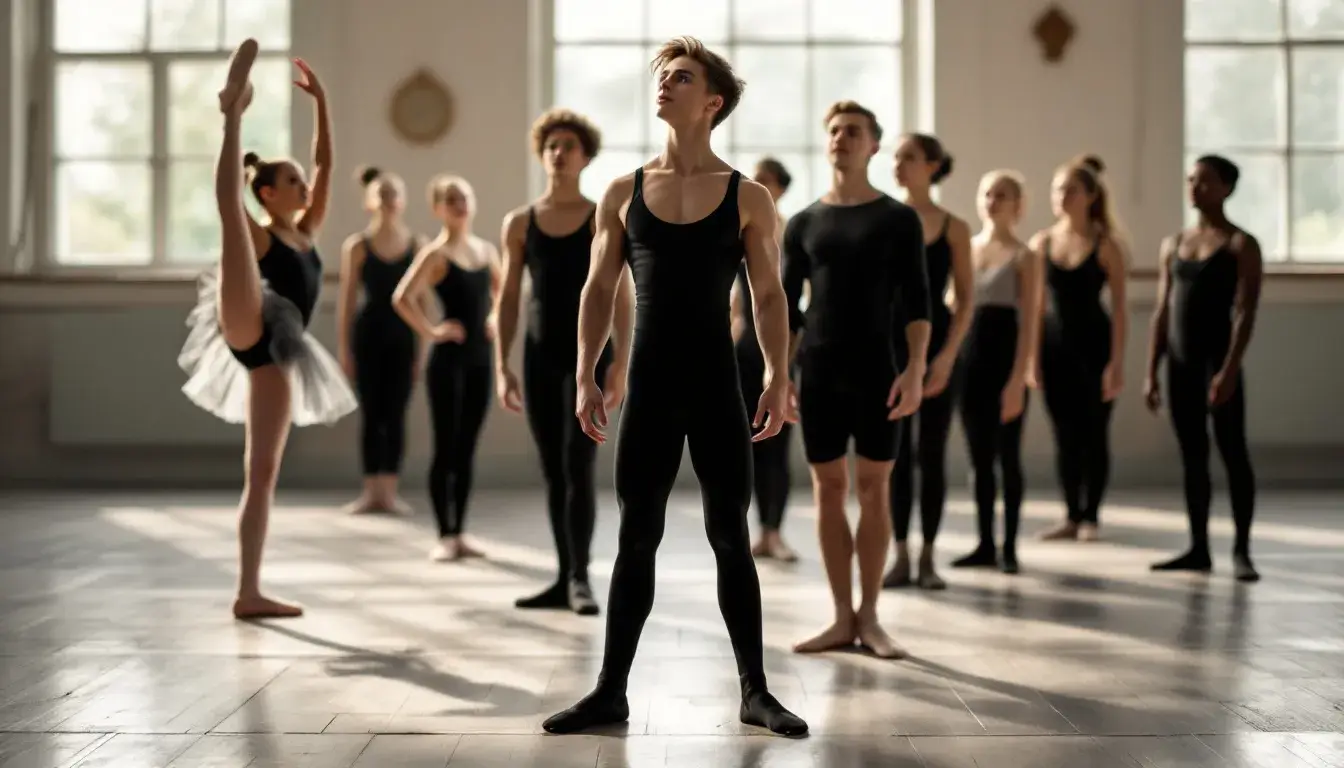
The School of American Ballet offers various training programs tailored for different age groups and skill levels at the ballet school. These programs are designed to provide comprehensive dance training, preparing students for professional ballet careers.
Children’s Division
The Children’s Division at SAB serves students aged 8 to 13. Six training intensity and complexity levels increase for girls and five for boys. This division provides individualized instruction, ensuring children and young dancers develop strong foundational dancing skills.
Students trained in the Children’s Division are often selected to perform in productions like George Balanchine’s The Nutcracker. In these performances, they showcase their skills alongside trained professional dancers. These opportunities enhance their training and prepare them for more advanced programs.
Intermediate and Advanced Divisions
The intermediate and advanced divisions offer training programs for more experienced students. These programs focus on training ballet dancers, teaching and refining technical dancing skills, and preparing students for professional ballet careers.
These programs have a significant impact, as they play a crucial role in shaping the future careers of ballet dancers. Students in these divisions train six days a week, developing the skills needed for potential careers in ballet.
Summer Intensive Workshops
SAB’s summer intensive workshops provide focused training sessions during the break, allowing students to enhance their skills. These workshops include intensive training opportunities in pointe, partnering, and contemporary dance, helping students further hone their ballet skills.
The Summer Course is a key pathway for students aspiring to join SAB’s year-round training programs. Applicants aged 12-18 must demonstrate appropriate technical training and be physically prepared for classical dance.
The deadline for submitting video applications for the Summer Course is January 31, 2025. This program provides an immersive experience and prepares students for advanced training and professional opportunities.
Performance Opportunities
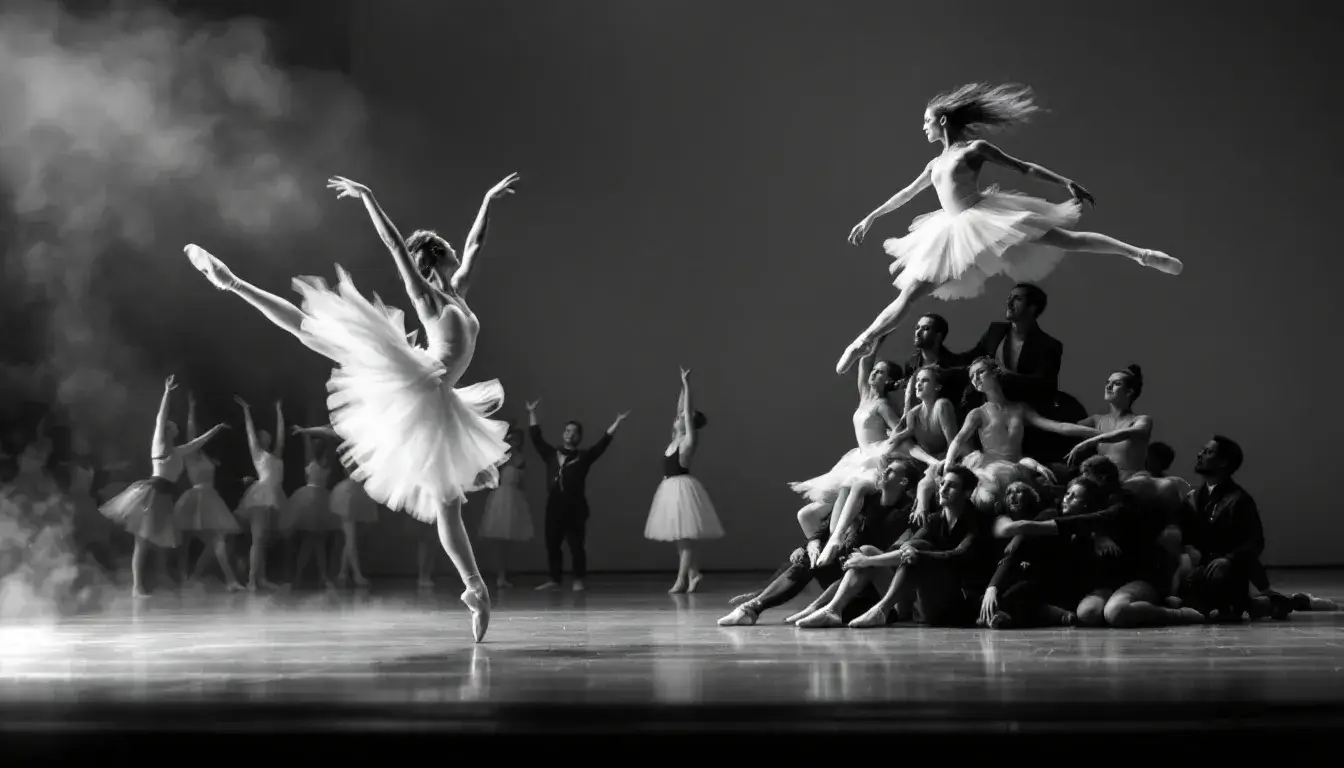
Performance opportunities are vital to dance training at SAB, allowing students to showcase their talents and gain real-world experience. Many performances occur at Lincoln Center, giving students prestigious venues to display their skills. These opportunities are integrated into the curriculum, enhancing students’ preparation for professional careers.
Annual Productions
The school hosts annual workshop performances, where students exhibit their dance skills to a wider audience. These productions provide essential performance experience and help students develop stage presence and confidence.
Collaborations with Ballet Companies
SAB hosts annual Workshop Performances, which showcase advanced and select children’s division students in three spring performances at Lincoln Center. These collaborations with renowned music and ballet companies provide students with invaluable real-world performance experiences.
The Workshop Performances have been a significant tradition for nearly 60 years. They allow students to present their skills to an audience and highlight the school year, offering students a platform to demonstrate their progress and talent.
Studio Showcases
Studio showcases allow students and teachers to present their talents in an intimate setting. These smaller performances allow a more personalized experience for performers, teachers, and audience members.
These showcases are an integral part of the training at SAB, offering students the chance to perform in a supportive environment. This intimate setting fosters a closer connection with the audience, enhancing the student’s performance skills and confidence.
Life at the School of American Ballet
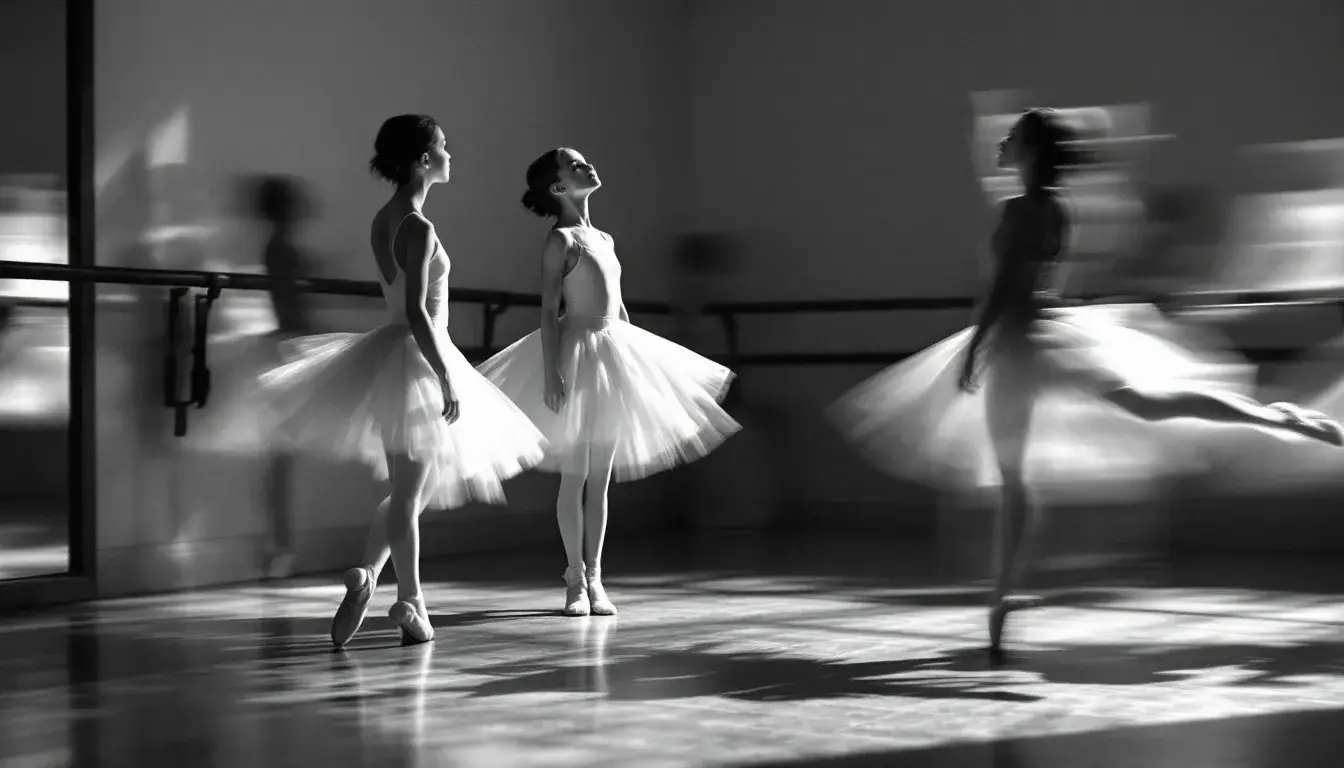
Life at SAB is enriched by its location at Lincoln Center, which enhances the student experience through a supportive community and various extracurricular activities. The school provides a nurturing environment that balances artistic development with personal growth and academic achievement.
Residence Halls
The SAB residence halls in Lincoln Center provide a nurturing environment tailored to the needs of students aged 14 to 18. These halls offer contemporary living spaces, private bathrooms, and large student lounges.
The residence halls are equipped with modern amenities and conveniently located near New York City’s cultural attractions. This proximity allows students to immerse themselves in the city’s vibrant arts scene, enhancing their overall experience at SAB.
Student Support Services
SAB offers comprehensive support services, including academic assistance and career guidance tailored to students’ needs. The school also provides an Advising Program to ensure all students can access teachers and staff for advice on non-artistic aspects of their experience.
Counseling services, academic support, and professional career guidance are available to help students navigate their educational and professional journeys. These services help students maximize their potential and achieve their goals.
Events and Activities
The School organizes various extracurricular activities to enhance student engagement and community building. These activities include workshops, social events, and performances that foster a sense of community among students.
Intimate studio showcases allow students to present their work more personally, fostering a closer connection with the audience. These events are crucial in student development and community bonding among peers.
Faculty and Staff
Renowned Instructors
The School of American Ballet boasts a faculty of renowned experts in their fields. Our instructors have performed with some of the world’s most prestigious ballet companies, including the New York City Ballet, American Ballet Theatre, and the Joffrey Ballet.
They bring their wealth of knowledge and experience to the classroom, providing students with the highest training and mentorship. This exceptional faculty ensures that students receive top-tier dance education grounded in classical ballet’s rich traditions while embracing contemporary techniques.
Guest Lecturers and Choreographers
In addition to our regular faculty, the School of American Ballet hosts guest lecturers and choreographers worldwide. These esteemed artists share their expertise and insights with our students, providing them with a unique and enriching learning experience.
Recent guest lecturers have included artistic directors from leading ballet companies and choreographers who have worked with some of the industry’s biggest names. This exposure to diverse artistic perspectives helps students broaden their understanding of ballet and prepares them for versatile careers in dance.
Facilities and Location

State-of-the-Art Studios
The School of American Ballet is located in the heart of New York City. Its state-of-the-art studios provide students with the ideal environment for dance training. Our studios have professional-grade flooring, mirrors, and sound systems, ensuring students have everything they need to perfect their craft.
The school’s location also provides students access to various cultural and artistic resources, including the New York City Ballet and other leading dance companies. This prime location enhances the students’ training experience and immerses them in the vibrant arts scene of New York City, offering unparalleled opportunities for inspiration and growth.
Tuition and Financial Aid
Attending the School of American Ballet requires a financial commitment, but the school offers various options to help families manage the costs. SAB allocates nearly $2 million annually for scholarships and financial assistance to ensure talented students can enroll regardless of their financial situation.
Tuition Fees
For the 2023-24 Winter Term, the tuition for first-year beginner students at SAB is approximately $3,930. Attending the School of American Ballet requires a financial commitment. Families are responsible for covering the full year’s tuition once enrolled, with no refunds if a student withdraws.
For the 2024-2025 academic year, families must pay the full tuition and fees upfront upon enrollment. This policy ensures that the school can maintain its high standards and provide the necessary resources for student training.
Scholarships and Grants
Scholarships and financial assistance are crucial in making ballet education accessible to talented students regardless of their financial background. SAB offers various scholarships based on merit and need, which can significantly reduce the economic burden of tuition.
In addition to scholarships, students can apply for grants that assist with educational expenses. These financial aids enable dedicated students to pursue ballet training without stress.
Payment Plans
SAB provides a 10-month installment plan for tuition payments, helping families manage their financial commitments more effectively. This plan also helps spread the financial burden, making it more manageable for families.
Families can pay tuition in full or opt for the 10-month installment plan. This flexibility ensures that ballet training at SAB is accessible to a broader range of students, regardless of financial circumstances.
Admission Process

The School of American Ballet’s admission process is designed to identify and select the most talented and dedicated students. Prospective students must undergo a structured application process that includes audition submissions.
Audition Requirements
Admission to SAB’s Summer Course is selective. All students must submit auditions for acceptance. To qualify, applicants must be at least 6 years old by September 1 of the audition year.
Auditions for younger students (ages 6-10) are typically held in spring, while older students (ages 11-18) audition in September. These auditions assess the applicants’ technical skills and potential for success in the program.
Application Deadlines
The school’s specific application deadlines should submit applications and audition materials for the Winter Term. Adhering to these deadlines is crucial to ensuring a smooth admission process.
Winter Term auditions for younger students occur in the fall and spring, while older applicants audition in September. Meeting these deadlines is essential for prospective students to secure their place in the program.
International Students
International students interested in year-round training at SAB should first apply to the summer programs, with primary recruitment occurring during the Summer Course. To enroll in the Summer Course, international applicants can submit a video application if they cannot attend in-person auditions.
After enrollment, accepted international students will receive guidance on obtaining a student visa. This support ensures they can navigate the visa process and focus on training.
The Summer Course allows international and university students aged 12 to 18 to experience SAB’s training syllabus. It provides a valuable introduction to the school’s curriculum and teacher training methods.
Resume
In summary, the School of American Ballet is a premier institution for ballet training. It offers a rich history, a comprehensive curriculum, and extensive performance opportunities. From its founding by George Balanchine and Lincoln Kirstein to its ongoing commitment to excellence, SAB continues to shape the future of ballet.
The school’s dedication to nurturing young talent, providing financial support, and offering a holistic educational experience ensures that students are well-prepared for successful careers in dance. Whether you’re an aspiring dancer or a supporter of the arts, the School of American Ballet represents the pinnacle of ballet education and training. If they can also submit video applications



